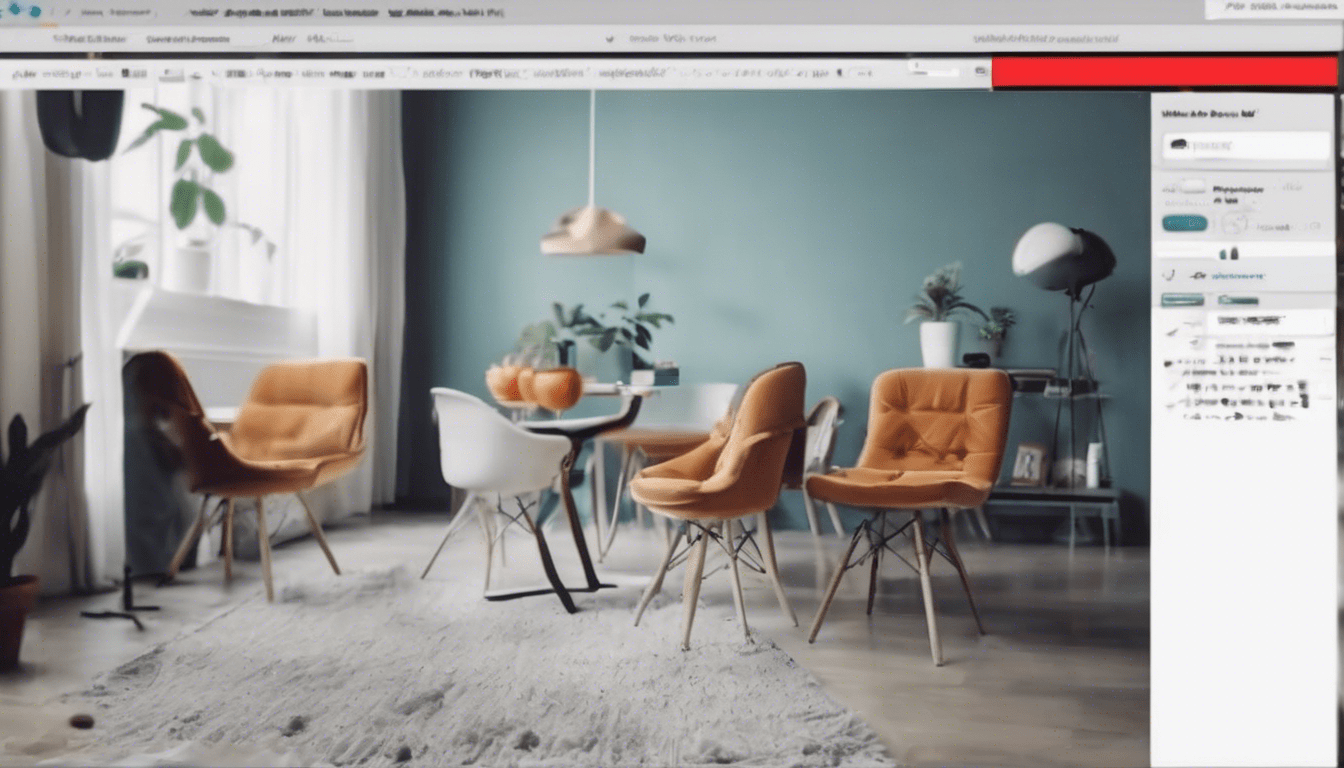Converting URLs into captivating videos transforms static links into dynamic stories that boost engagement and outreach. Visual content increasingly dominates digital marketing, making this technique essential for capturing modern audiences. Data shows that videos generated from URLs significantly increase viewer interaction and conversion rates. By blending content extraction, creative design, and strategic optimization, brands can unlock new levels of reach—turning simple links into powerful storytelling tools that resonate and convert.
Understanding the Importance of URL-to-Video Conversion
Converting URLs into videos significantly enhances engagement by transforming static web addresses into dynamic visual stories. This approach taps into the increasing demand for video content, a crucial element in modern digital marketing strategies. Videos capture attention more effectively than text alone, making topics more relatable and easier to comprehend for diverse audiences.
Topic to read : Unlock success: top strategies for real estate lead generation
A core reason for converting URLs into videos lies in the power of visual content to boost outreach. Videos stimulate multiple senses, increasing the likelihood that users will remember and share content. By turning a simple URL into an engaging video, marketers can convey complex information swiftly and creatively, maximizing the value of their digital presence.
Studies have shown that video content on platforms can lead to higher click-through rates and better audience retention than traditional text or image-based posts. For example, campaigns leveraging URL-based videos frequently report improved conversion metrics, including greater time spent on the site and an increase in social shares. This method also adapts well to mobile consumption, aligning with how users primarily browse the internet today.
Also read : Unlocking social media success: strategies for uk businesses to connect with their target audience
Incorporating URL-to-video conversion within your digital toolkit supports a more interactive user experience. This technique provides opportunities for storytelling, product demonstrations, or educational content that resonates more deeply. So, embracing this transformation can mark a significant step forward in how content is delivered and consumed online. For more insights, see the full post.
Step-by-Step Guide to Converting URLs into Engaging Videos
Creating engaging videos from URLs requires a clear process to turn web content into dynamic visual stories. Following a structured video creation process ensures content is both informative and visually appealing.
Selecting Suitable Tools and Software
Choosing the right platform is crucial for a successful video creation process. Popular tools like Lumen5, Animaker, and InVideo offer diverse features tailored for different needs. Lumen5 specializes in transforming blog posts and articles into videos using AI-powered content extraction, making it ideal for users seeking automation. Animaker provides a user-friendly drag-and-drop interface with a rich library of animated assets, perfect for customizing videos without prior experience. InVideo combines extensive templates with advanced editing options, balancing ease of use and professional quality.
When selecting the best tool, consider your content type and intended audience. Pricing models vary, from subscription plans to pay-per-video options, so factor in your project’s scale and budget. Assess each platform’s video output quality, export formats, and integration abilities to match your goals precisely.
Extracting and Structuring Content from URLs
Efficient extraction is central to a smooth video creation process. Techniques include web scraping tools or platform-specific URL importers that pull text, images, and metadata directly from web pages. These methods help assemble accurate content that maintains the original message’s integrity.
Once extracted, organize content logically—group key points, select impactful images, and draft a coherent script. Maintaining content accuracy and relevance is vital; verify facts and update outdated information before embedding it in your video. This approach enhances credibility and viewer trust.
Designing Visually Captivating Videos
Using customizable templates streamlines the video creation process while allowing personalization. Incorporate branding elements such as logos, color schemes, and fonts to maintain consistency with your identity. Adding multimedia components like photos, icons, and infographics enriches the visual narrative.
Engaging transitions and effects boost viewer retention by smoothing scene changes and highlighting essential information. Balancing visual flair with clarity ensures your core message remains accessible and compelling.
Tips to Maximize Viewer Engagement
Engagement hinges on storytelling. Craft narratives that blend factual content with emotional appeal, guiding viewers through a clear progression. Calls to action, like prompts to visit your site or subscribe, increase interaction and conversion.
Use animations and motion graphics thoughtfully to emphasize points without overwhelming the viewer. Paired with soundtracks or ambient music, these elements heighten emotional impact, making videos memorable.
This carefully managed video creation process, from selecting tools to maximizing engagement, transforms URLs into powerful visual content. For deeper insights and practical tutorials, see the full post.
Best Practices for Creating Effective URL-Based Videos
Enhancing engagement through smart video strategies
Keeping Videos Concise and Focused
When converting URLs to videos, maintaining conciseness is crucial for retaining viewer attention. Research shows that videos between 1 to 3 minutes deliver the highest viewer retention rates. This duration allows clear presentation of the URL content’s key points without overwhelming the audience. Focus on highlighting the essential information extracted from the web page to create videos that are both impactful and easy to digest.
Effective scripting centers on distilling web content into succinct segments. Prioritize the most relevant data or messages so viewers quickly grasp the video’s purpose. This approach reduces cognitive load and sustains interest, especially on social media platforms where users scroll rapidly.
Ensuring Accessibility and Readability
Accessibility begins with making videos understood by a diverse audience. Adding subtitles and captions enables comprehension even in sound-off environments, broadening reach. For users with hearing difficulties, these features are essential and reflect inclusive practices.
Visual clarity improves viewer experience further. Choose clear fonts and maintain high contrast between text and backgrounds. This prevents strain and ensures all viewers can effortlessly read on-screen information, making the video more accessible across devices and lighting conditions.
Optimizing Videos for Platforms and Searchability
Successful videos align with platform specifications. Utilize widely supported file formats such as MP4 to ensure compatibility and smooth playback. Aim for resolutions like 1080p or higher to present URL content sharply, supporting professional appearance and engagement.
Incorporate relevant keywords and descriptions derived from the original URL content. This practice enhances searchability on platforms like YouTube and Google, helping target audiences find your videos organically. Keywords should reflect the core topic and notable phrases from the URL source.
Lastly, embedding videos strategically across websites and social media maximizes exposure. Use responsive players and embed codes that maintain quality regardless of screen size, ensuring optimal viewing whether on desktop or mobile. This step completes the process of turning URL content into accessible, compelling videos.
For a comprehensive guide on the entire approach, see the full post.
Examples and Case Studies of Successful URL-to-Video Implementations
Exploring real-world examples reveals how brands have harnessed the power of URL-to-video conversion to enhance their marketing strategies. One common thread among successful implementations is the transformation of static URLs into dynamic, engaging videos that capture audience attention more effectively than traditional text links.
For instance, brands have reported a significant increase in engagement metrics by embedding videos generated from their URLs into social media campaigns and email marketing. Engagement rates often increase because videos provide a richer sensory experience, which encourages viewers to spend more time with the content. This can result in higher click-through rates and better conversion figures.
A measurable impact of URL-to-video tools is evident in the way companies boost both reach and user interaction. Detailed case studies show that videos derived from URLs often improve shareability, leading to organic growth in audience size. The scalability of these solutions is also noteworthy; brands can automate video creation from vast URL databases, enabling personalized marketing at scale.
Lessons learned from these implementations stress the importance of quality and relevance in automated video content. Ensuring that videos maintain a coherent narrative tied to the original URL content is vital for audience retention. Brands that succeed do so by carefully curating the video elements to match their target demographics’ preferences.
Overall, the combination of enhanced engagement, improved conversion rates, and scalable production makes the adoption of URL-to-video conversion tools a smart move for brands aiming to maximize digital marketing effectiveness. For a deeper dive into practical steps and further examples, see the full post.
Advanced Techniques for Captivating Viewers with URL-Based Videos
Creating engaging video marketing content involves more than just converting a URL into a video. To truly captivate viewers, marketers are adopting advanced techniques that leverage the unique possibilities of URL-based videos.
One effective approach is incorporating interactive elements directly into the video. Adding clickable links or quizzes encourages active viewer participation, increasing engagement and retention. These features transform passive watching into a dynamic experience, making the content memorable and driving higher conversion rates.
Personalizing videos based on target audience data is another powerful strategy. By tailoring video content to viewers’ preferences, demographics, or behaviors, brands can deliver more relevant and compelling messages. This personalization fosters a deeper connection, boosting viewer interest and encouraging sharing.
Finally, marketers can enhance their video marketing success by leveraging analytics. Detailed performance metrics enable continuous refinement of video content and delivery methods, ensuring the videos resonate better with audiences over time. Understanding what works and what doesn’t helps creators optimize future campaigns effectively.
Together, these techniques elevate URL-based videos beyond simple content, turning them into interactive, personalized tools that captivate and convert viewers.
For a more detailed guide on transforming URLs into engaging videos, see the full post.
Conclusion and Resources for Further Learning
Mastering URL to video conversion opens exciting avenues for content creators and marketers aiming to engage their audiences effectively. To deepen your expertise, consider exploring various tutorials and guides that walk through the technical and creative aspects of this process. Carefully structured courses provide step-by-step instructions and practical examples that ensure a solid foundation in converting URLs into compelling videos.
In addition to tutorials, staying connected with industry blogs and webinars is vital. These platforms frequently discuss the latest tools, trends, and best practices in the realm of URL to video conversion, helping you stay ahead. Engaging with online communities dedicated to content creation and video marketing offers collaborative opportunities and answers to specific questions you may encounter.
To maintain high content quality and keep your audience engaged, consistently review the visual appeal and relevance of your video content sourced from URLs. Testing different video formats and styles can also boost viewer retention.
For those interested in a comprehensive exploration of this topic, see the full post. This resource compiles essential insights and practical guidance to elevate your URL to video conversion skills to the next level.











